National Parks in Texas


Texas is the US's second-largest state by area (after Alaska). The Lone Star State is home to spectacular mountain ranges, colossal canyons, and vast deserts, as well as around 350 miles of coastline.
Many of the most beautiful and historically significant areas have been brought under the protection of the National Park Service (NSP). While only two of these are officially classed as National Parks— Big Bend National Park and Guadalupe Mountains National Park— there are 14 in total.
We’ll take a look at the best of them in this article.
1. Big Bend National Park
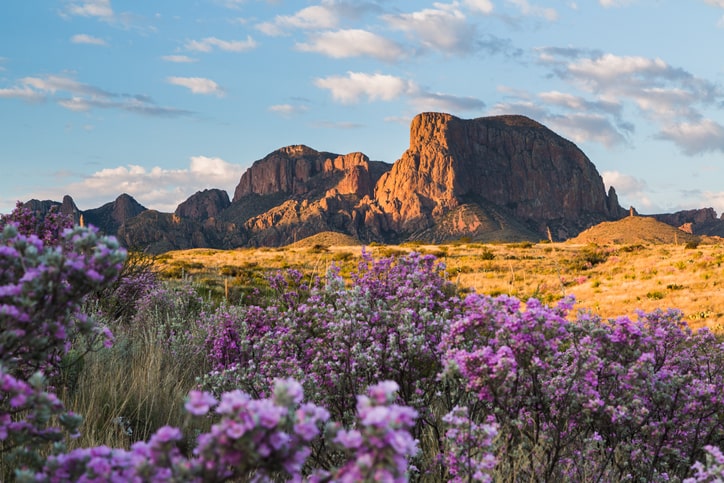
Famous For: Desert, mountain, and river wilderness
Why not start with the biggest of them all?
With an area of over 1250 square miles, Big Bend is Texas’s largest National Park. Its name comes from the fact that it sits on the inside of a huge bend of the Rio Grande as it swings almost 90 degrees from southeast to northeast. Over 118 miles of the river form the southern border of the park.
It’s the largest protected area in the Chihuahuan Desert, which straddles several states in northern Mexico and the southwestern USA.
The park is one of the most remote in mainland USA, which is perhaps why it’s one of the least visited. However, it still welcomes hundreds of thousands of visitors each year, who mainly enjoy wandering over 200 miles of hiking trails that wind through the truly sensational scenery.
Most visitors make use of the four campsites in the park, or simply head out into the wilderness and set up camp wherever the mood takes them. A permit is required for backcountry camping. The park only has one lodge, the Chisos Mountains Lodge.
Tour operators run boating excursions and tours along the park’s stretch of the Rio Grande, and boaters can also float freely with a permit. Just be aware that landing on the Mexican side is illegal except in exceptional circumstances.
The park is also popular with stargazers due to the fact it has the lowest levels of light pollution in North America.
The diverse ecology of arid desert, cool mountains, and lush river valleys mean Big Bend National Park supports an array of wildlife. This includes 1200 plant species, over 100 species of mammal and reptile, and around 3600 species of insect.
It’s also something of a mecca for geologists, with the jumble of unusual rock formations indicating a very complex geological past and many puzzling questions to be answered about how it was all formed.
2. Guadalupe Mountains National Park
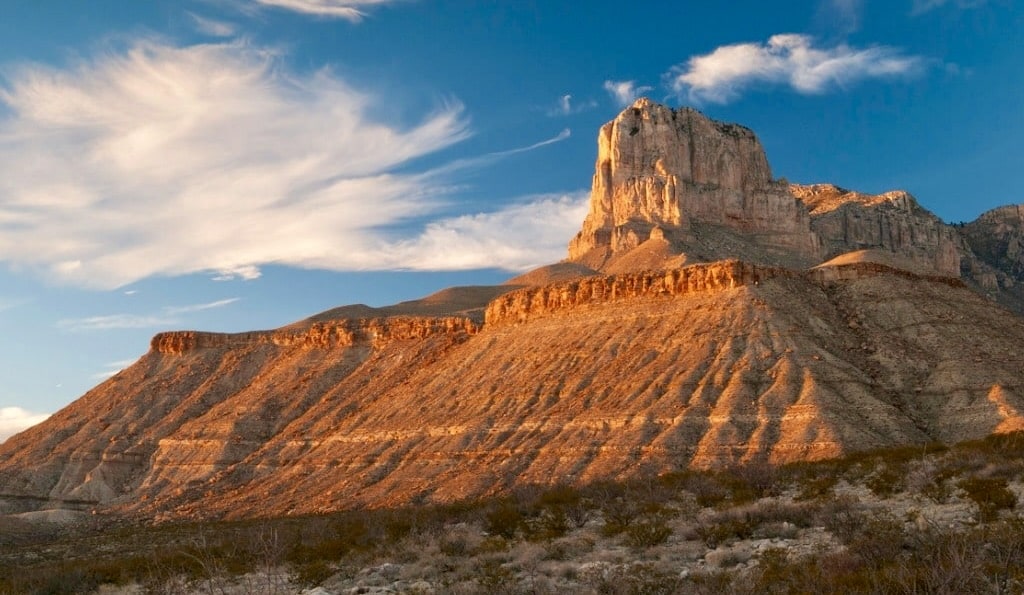
Famous For: Deserts, dunes, and fossils
Texas’s only other designated National Park may only be around one-tenth the size of Big Bend, but it’s no less beautiful. With an area of around 135 square miles, it’s located in west Texas, not far from the border with Mexico to the southwest and the state of New Mexico to the north.
While the larger Big Bend provides a broader range of natural features, Guadalupe Mountains National Park is characterized by the presence of towering peaks, as the name suggests. Texas’s four highest peaks are all found here, and eight of the top ten. Guadalupe Peak is the highest point in Texas, at 8751 feet.
The park sees almost 200,000 visitors annually. Most are there to enjoy hiking and backpacking in the mountains. While it does have a visitor center and two campgrounds, it doesn’t have the same level of amenities as Big Bend. No roads run through the heart of the park, and a large portion of it is officially designated a wilderness.
This, combined with the rugged, mountainous terrain, perhaps make it more suited to those looking for a more raw, isolated backpacking experience among Texas’s highest peaks.
3. Rio Grande Wild & Scenic River
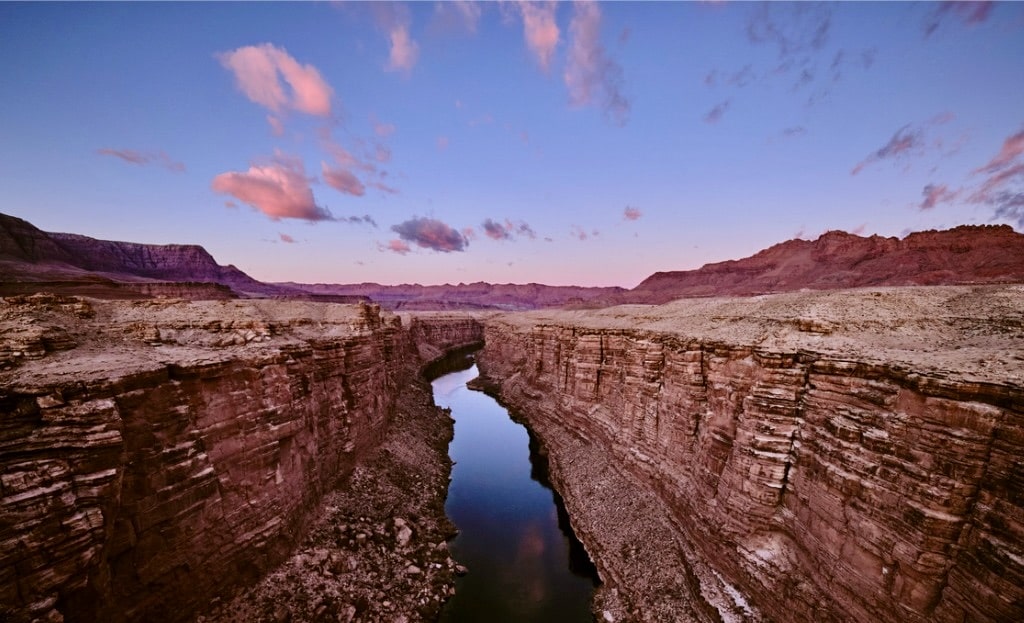
Famous For: Winding river canyons
For over 1000 miles, the Rio Grande provides a physical border between Mexico and the USA.
A 196-mile stretch of the river, beginning at Mariscal Canyon in Big Bend National Park, had been designated a National Wild and Scenic River. This section provides exceptional boating opportunities through jaw-dropping canyons and valleys. These range from short half-day floats to week-long excursions.
Popular areas include Boquillas Canyon and Hot Springs Canyon.
4. San Antonio Missions National Historic Park
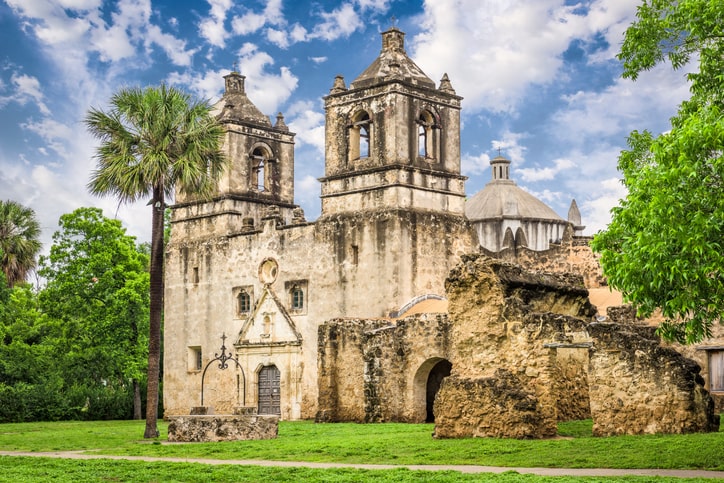
Famous For: UNESCO World Heritage Site
This UNESCO world heritage site, the only one in Texas, provides a very different experience from Big Bend and Guadalupe Mountains National Parks. With over 1.3 million visitors in 2021, San Antonio Missions is the most visited NPS property in Texas.
It covers only 1 ½ square miles and is situated near the center of San Antonio, Texas’s second largest city after Houston.
The park contains four separate missions, situated along a trail beside the San Antonio River south of the city. A fifth mission, located further upstream and known as the Alamo, is part of the UNESCO site but not part of the National Historic Park.
They were established over 300 years ago by Spanish missionaries to convert the indigenous population into Spanish Citizens.
They are now regarded as nationally significant monuments that tell the story of how the culture of southern Texas developed.
Each of the four missions still has an active Catholic parish, and there’s plenty of information that allows you to delve into their fascinating histories.
You can take them all in within a day with the popular Missions Trail, a hike-or-bike trail that passes by each of the four missions in the park, and the Alamo.
5. Padre Island National Seashore
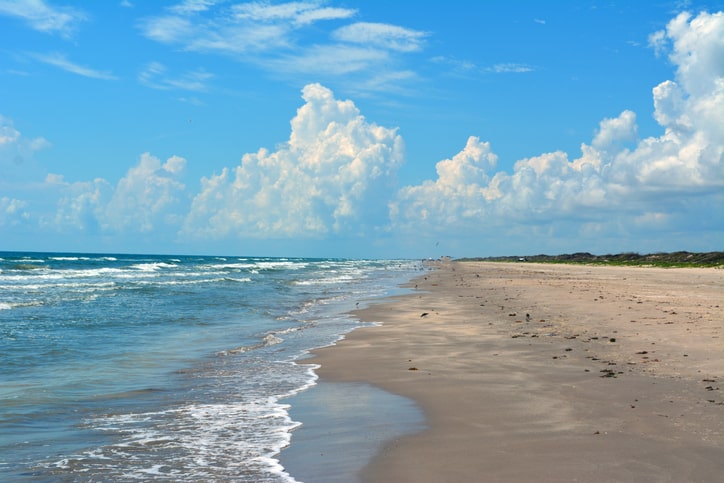
Famous For: Seashore and island
One of the USA’s ten National Seashores protected by the National Park Service, Padre Island National Seashore is part of the largest undeveloped barrier island in the world.
The Park protects 65 miles of North Padre Island, which is situated just off the coast near the city of Corpus Christi and stretches southwards for 70 miles.
The landscape is constantly shifting, with the long, narrow stretch of sands constantly battered by winds and tides.
The dunes and prairies are a haven for wildlife. They are one of the major nesting grounds of the Kemp’s ridley sea turtle, the smallest, rarest, and most endangered sea turtle in the world. Between June and August, visitors can attend public hatchling releases under the supervision of park staff.
Padre Island National Seashore is also a globally significant bird habitat, with almost 400 species of bird seen on the island. It provides an important stopover on the Central Flyway, a major north-south migratory for many species of bird. Thousands of birds also winter on the island, making for excellent birdwatching opportunities.
The Laguna Madre lies between Padre Island and the coast of Texas, and many visitors enjoy boating, fishing, and windsurfing on the water.
6. Lyndon B. Johnson National Historical Park

Famous For: Presidential birthplace, home, and ranch complex
You can discover the story of the 36th President of the United States at Lyndon B. Johnson National Park, the location of his birthplace, home, and final resting place.
The park actually comprises two separate areas— the Johnsons City District where you’ll find his boyhood home and the Visitor Centre, and the LBJ Ranch, containing his family retreat while he was president, and the family cemetery.
The most popular way to tour the Park is to obtain a permit and drive your own vehicle to the various landmarks.
The Ranch is about 14 miles west of Johnson City and contains the Ranch House where the president spent a significant amount of his time in office. In fact, because he conducted so many of his affairs here, it became known as the Texas White House.
Although the interior of the house has been closed for some time due to structural issues, you can still tour many of the Ranch’s other features, such as the hangar used to house the jet that transported Johnson from here to the actual White House.
The Texas Hill Country surrounding the ranch is home to a wide range of both native and exotic species such as deer, turtles, and snakes, as well as many species of birds.
7. Amistad National Recreation Area
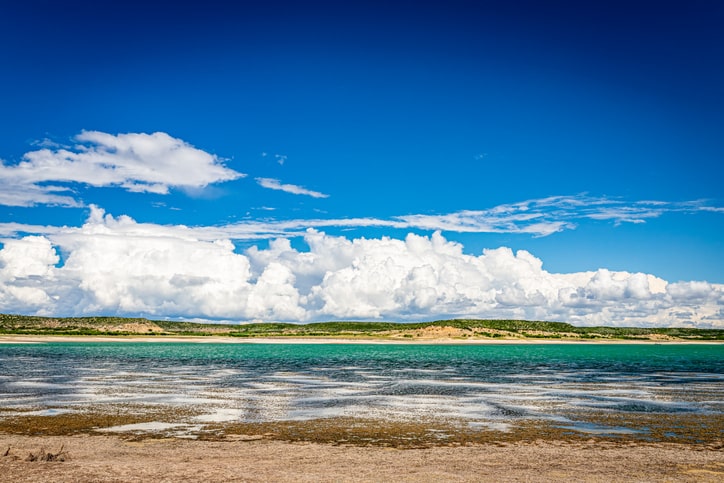
Famous For: Pictographs
Located at the border with Mexico near the town of Del Rio, the Amistad National Recreation Area surrounds the American part of the Amistad reservoir on the Rio Grande.
The name "Amistad" is the Spanish word for friendship and may have been given due to the close ties between Del Rio and the Mexican city of Ciudad Acuña, which is just across the border.
The park is a haven for those who enjoy aquatic activities, with boaters presented with both expanses of open water and stunning, steep-sided canyons. Fishing is also very popular along the reservoir, and scuba divers are attracted by the crystal clear waters.
There are extensive hiking opportunities around the hills surrounding the lake, although this is restricted during hunting season.
The park contains several caves where visitors can view prehistoric rock art. Perhaps the most well-known is Panther Cave, accessible only by boat from the Rio Grande. Guided tours are available at many of the park's rock art sites.
Amistad’s situation at a transition between climate and ecological zones supports an interesting mix of wildlife. It’s perhaps most well known for the fall migration of Monarch butterflies. Thousands upon thousands of them descend on the park around October, on their way south to winter in Mexico.
8. Palo Alto Battlefield National Historical Park
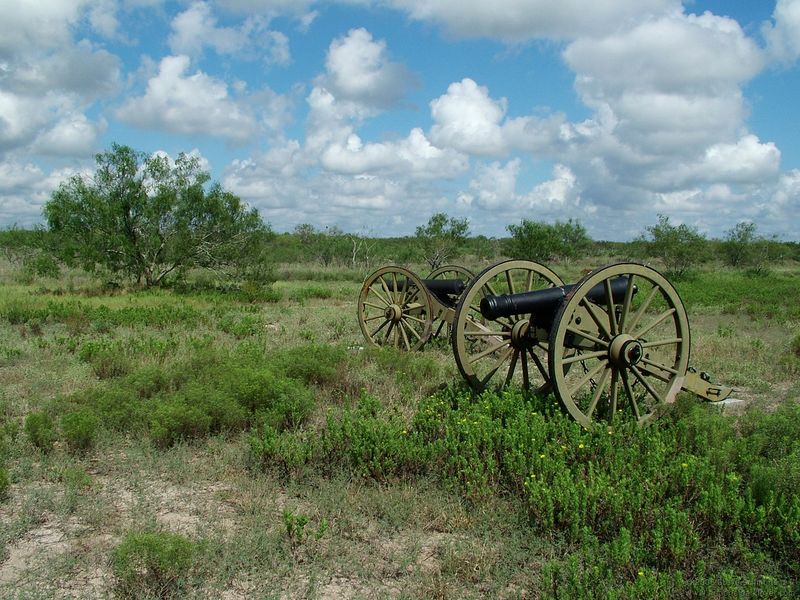
Famous For: Notable battle sites
Located just north of the city of Brownsville in southern Texas, this Historic Park preserves the site of an 1846 battle that was the first in the conflict leading to the Mexican-American War.
Efforts to preserve the historical integrity of the battlefield have also served to protect the cornucopia of plant life in the area— history and nature hand in hand.
Guided tours run from the visitor center, providing a fantastic opportunity to learn about this largely forgotten— yet significant— area of American history.
9. Alibates Flint Quarries National Monument
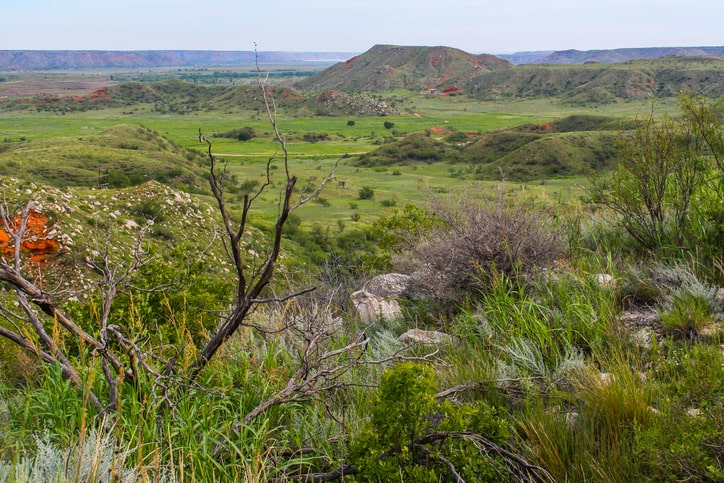
Famous For: Historic quarries
This National Monument protects a site that was used for thousands of years to mine flint for tool making. The brightly-colored flint from this area has been found all across the great plains, attesting to its widespread use and quality.
Access is only available through ranger-led tours booked in advance. The visitor center gives flint-knapping demonstrations and the tours provide a wealth of information about the history of the area and the local flora and fauna.
The hike to the top also offers stunning views across the adjacent Lake Meredith National Recreation Area, also managed by the National Park Service.
10. Lake Meredith National Recreation Area
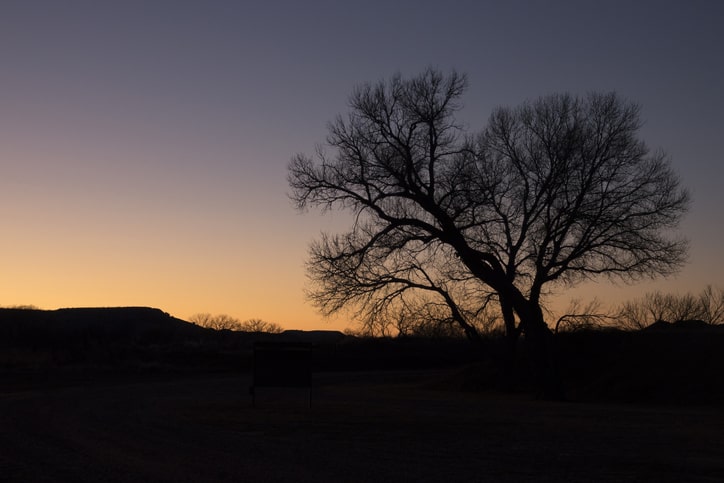
Famous For: Nature park and camping ground
Along with Alibates Flint Quarries, Lake Meredith is located right in the middle of the Texas Panhandle.
Most of the hundreds of thousands of annual visitors are drawn by the exquisite boating opportunities, and it’s also a popular place to fish.
However, the hills and plains surrounding the lake also offer fantastic opportunities for hiking, mountain biking, and camping. Combined with the Flint Quarries where you can get your educational fix, it’s a great place to spend a few days.
11. Big Thicket National Preserve
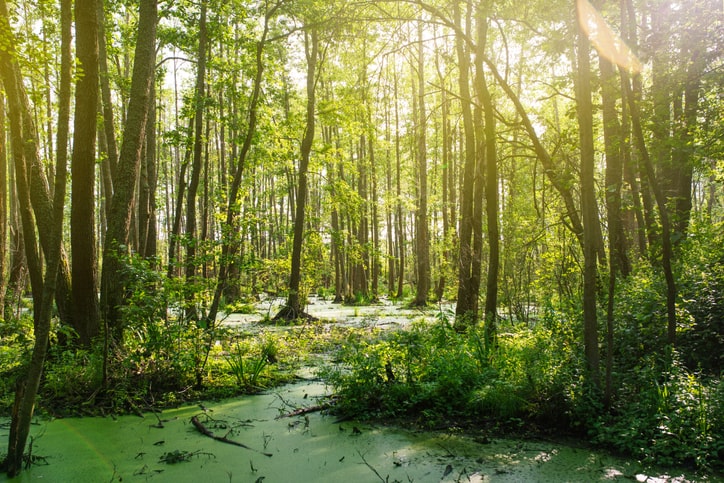
Famous For: Heavily-forested recreation area
This densely-forested area in southeast Texas is remarkable due to its incredible ecological diversity. A complex web of ecosystems, including fine forests, prairies, and swamps, supports an astonishing array of flora and fauna.
With many miles of hiking trails and paddling trails along the creeks and bayous of the forest, you can decide whether to explore Big Thicket on foot or from the water.
The vast Preserve is separated into 15 areas known as units. Five of these are developed units, with facilities and established trails. The rest are primitive units, with no facilities and more difficult access. Head to the visitor center near the city of Kountze where you can get information, maps, and permits.
12. Chamizal National Memorial
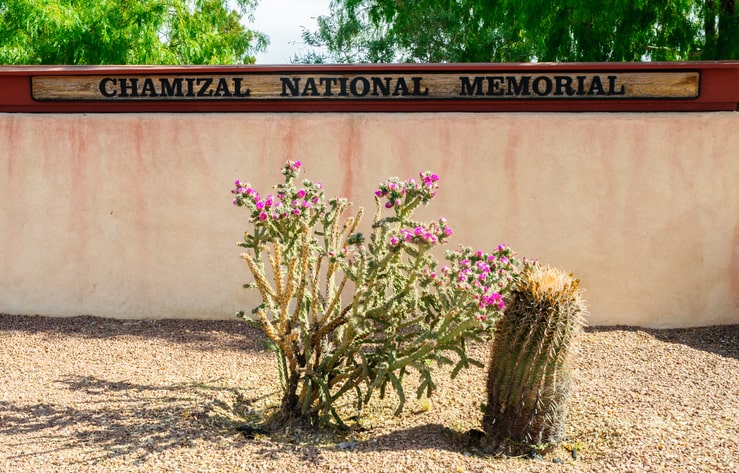
Famous For: Historic commemorative monument
This park in El Paso was built in honor of the settlement of the Chamizal dispute, which arose when flooding caused the Rio Grande to shift its course and therefore distort the location of the Mexico-US border.
The memorial contains an urban park that provides valuable green space for El Paso residents. It’s also an important cultural center, with a museum detailing the history behind the memorial, an art gallery, and both an indoor and outdoor theater where performances celebrate local history and culture.
13. El Camino Real de los Tejas National Historic Trail
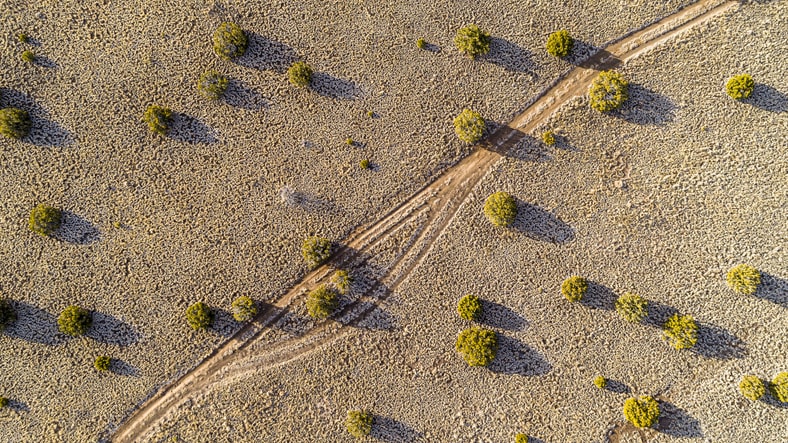
Famous For: Historic walking trail
During the Spanish colonization of North America, several Camino Reales or ‘royal roads’ connected Spanish colonial settlements with Mexico City. El Camino Real de Los Tejas runs all the way through Texas, passing through San Antonio, Austin, and other towns before crossing into Louisiana and ending in the city of Natchitoches.
At over 2,500 miles long, the trail encounters many different natural environments. There are also many museums, parks, and missions along the trail where you can learn about how this thoroughfare facilitated cultural, economical, and societal development in the region.
14. Fort Davis National Historic Site
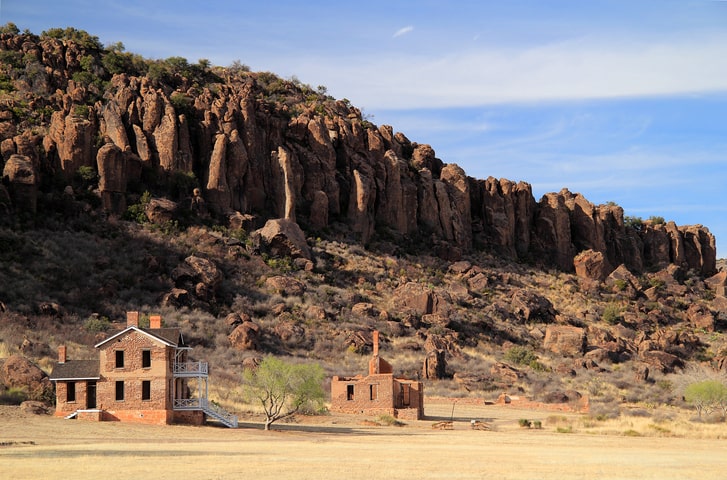
Famous For: Former frontier military post
This fantastically preserved military post contains 24 restored buildings and over 100 ruins. It’s a fantastic place to discover stories from the frontier of the Indian Wars. 6 of the buildings have been restored to their 1880s image so you can really get a feel for what life was like.
You can take self-guided tours starting at the visitor center, and during holidays the staff performs historic reenactments to bring the history to life.
Fort Davis is an important feature in the history of African-American soldiers (known as buffalo soldiers), as many served here during the wars. The museum and the Park’s staff tell their story.
There are also several breathtaking hiking trails taking in the scenery of the Davis Mountains State Park.
15. Waco Mammoth National Monument
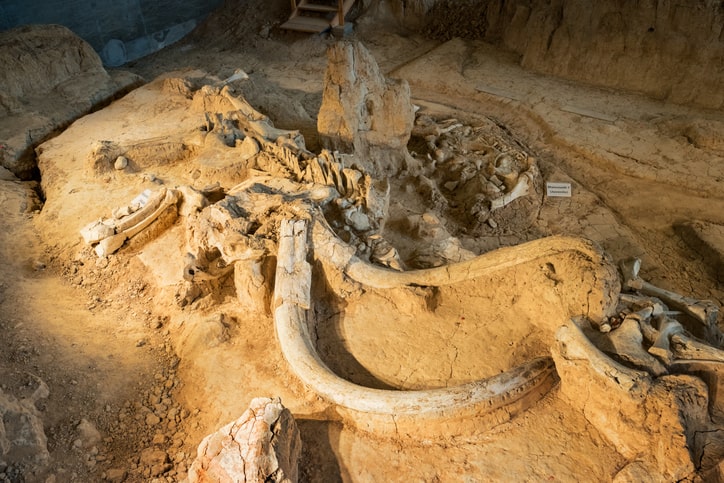
Famous For: Paleontological site
This paleontological site is the location of several mammoth fossils. They are the only known remains of the Columbian mammoth, that roamed North America thousands of years ago. It was a nursery herd, and many of the fossils are juvenile mammoths.
They’re believed to have died when flash flooding caused them to be trapped in a steep-sided channel where they drowned.
The original dig site is now sheltered in a building where the fossils are preserved with care. Guides provide a wealth of information about the ice age and the history of one of America’s most significant paleontological discoveries.
Exploring National Parks in Texas
Texas’s National Parks provide a wealth of unforgettable experiences, from exploring natural wonders to finding out about their rich heritage and how they influence all of America.
But it has lots more to offer. Why not take a look at the most significant Landmarks in Texas?
About the author







